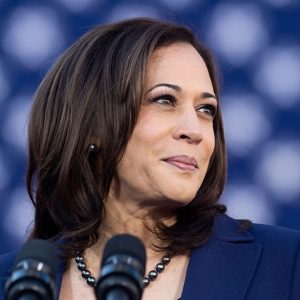A new Franklin & Marshall College poll of Pennsylvania voters found 46 percent support Vice President Kamala Harris and 43 percent support former President Donald Trump in the race for the White House. Independent presidential candidate Robert F. Kennedy Jr. received six percent support while Libertarian Chase Oliver and progressive Jill Stein each received one percent.
The results reflect how tight the presidential race is in the Keystone State.
“The size of a Beaver Stadium football crowd is going to determine the outcome of this election,” quipped Mercury Senior Vice President Vince Galko, a longtime state GOP strategist.
Harris’s margin in the Franklin & Marshall poll is similar to the leads she held in the Quinnipiac and New York Times/Siena polls released this week.
“The greatest change in the presidential race comes from the consolidation of support for Harris among the Democratic factions,” said Berwood Yost, director of the Center for Opinion Research and the Floyd Institute for Public Policy at Franklin & Marshall College.
About half of the 920 registered voters felt Pennsylvania was “on the wrong track.” Residents tagged the economy, specifically unemployment and gas and utility prices, as the most important issue in the state at 31 percent.
Seventeen percent of voters who support Harris said it was because she wasn’t Trump. Another 17 percent cited women’s rights while 15 percent praised her character.
Almost 30 percent of voters who support Trump cited the economy. Another 20 percent said the issue was immigration.
Galko thinks Harris will experience a reality check once next week’s Democrat convention is over.
“The more America sees the Democratic Party of 2024, the more they’re gonna realize, ‘This is not my cup of tea,’” he said.
That won’t stop the Harris and Trump campaigns from spending millions on campaign ads in Pennsylvania. They’re expected to pay a combined $211 million on TV, digital, and radio ads in the state this election cycle. About $42 million has been spent since Harris replaced President Joe Biden on the Democratic ticket. That’s the most of any state in the U.S.
In the high-stakes U.S. Senate race between Democrat incumbent Bob Casey Jr. and Republican challenger Dave McCormick, Casey leads McCormick 48 percent to 36 percent. Another 15 percent said they weren’t sure. Of that bloc, 20 percent were considering McCormick to Casey’s 12 percent.
Galko suspects the undecided are mostly made up of Republican suburban voters who left the party due to dissatisfaction with previous statewide candidates. He thinks McCormick has the resume to bring them back into the fold, so long as he focuses on issues that matter to the state.
“He obviously knows Pennsylvania, he’s invested in Pennsylvania, [and] he has deep roots in Pennsylvania,” said Galko.
At the same time, Galko suggested McCormick turn his campaign from a statewide campaign into more regional one with ads tailored to different Pennsylvania markets. Galko said that was how Republicans like Pat Toomey and Arlen Specter succeeded in winning their U.S. Senate races.
The F&M poll results appear to agree with McCormick’s message resonating with certain sections of Pennsylvania. He led Casey 46 to 39 percent in Northeast Pennsylvania, 47 to 40 percent in Central Pennsylvania, and 50 to 29 percent in Northwest Pennsylvania. Casey’s support coalesced around Philadelphia and the Delaware Valley where he leads McCormick 60 to 20 percent. He also led McCormick 51 to 34 percent in Pittsburgh and the surrounding areas.
On the generic congressional ballot, Democrats led Republicans 44 to 42 percent. Thirteen percent were undecided.
Please follow DVJournal on social media: X@DVJournal or Facebook.com/DelawareValleyJournal

